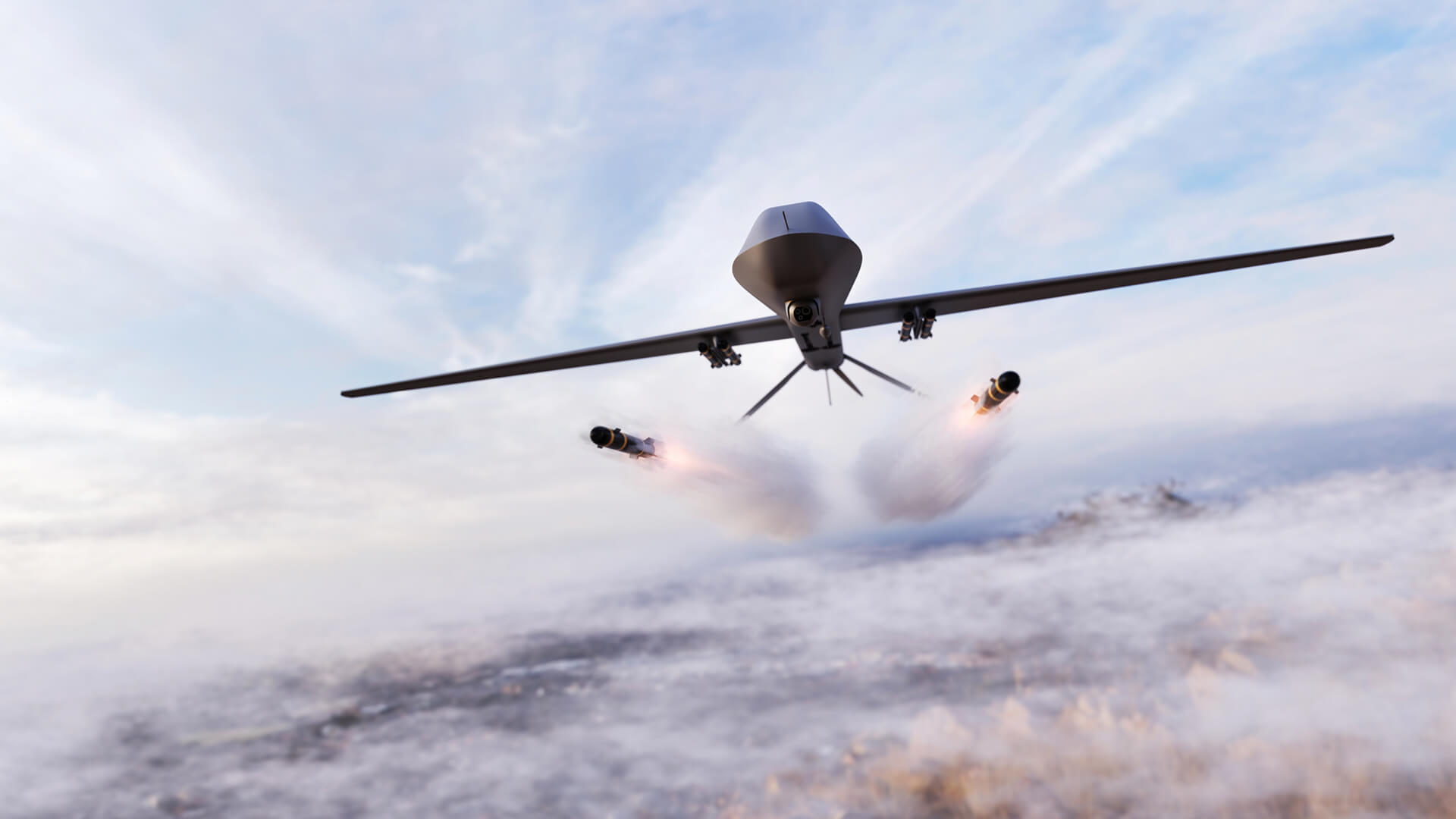Drones are all the rage right now and China is jumping on the bandwagon. With Chinese plans to create over 1 million combat-ready drones within two years, should the US be worried?
Drones may seem like a foolproof option, but that’s not the case. There are range, payload, and speed issues to consider, as well as ensuring an accurate guidance and targeting system is in place. The Chinese haven’t quite figured out all of those pieces. You must also factor in the US space and tech capabilities, which could render Chinese drones useless if it came to that.
If you want to make the argument that these drones open new doors for the Chinese, consider these factors. China’s drones would likely limit US naval operations near the mainland, but the Chinese air force already does that. Sure, there might be opportunities to make a little cash by offloading these drones in foreign markets, but not enough to move the needle. The only way I see these drones really impacting much would be if a drone-mothership was created and deployed (which the US is working on, not the Chinese).
All this to say, China’s drone production is impressive in scale, but their effectiveness in naval combat will be limited.
Here at Zeihan on Geopolitics, our chosen charity partner is MedShare. They provide emergency medical services to communities in need, with a very heavy emphasis on locations facing acute crises. Medshare operates right in the thick of it, so we can be sure that every cent of our donation is not simply going directly to where help is needed most, but our donations serve as a force multiplier for a system already in existence.
For those who would like to donate directly to MedShare or to learn more about their efforts, you can click this link.
Transcript
Hey everybody. Peter Zeihan here. Coming to you from the air in slow burn. And a glacier in New Zealand just to the north of the town of Glenorchy. Today we are taking a question from the Patreon page. And it is how is the United States going to deal with the absolute scads of drones that the Chinese say that they’re going to build?
The Chinese official plan, which I have no reason to doubt that they cannot achieve it, is to have over 1 million combat ready drones within two years. First, let’s talk about the nature of that sort of threat. And then second, what the US Navy has to do differently from what it’s uphill, might have to do differently.
I’m just climbing the marine here.
First of all, a million is a lot. But keep in mind, as we are learning from the Ukraine war, whenever you’re going to have a weapons platform, you have to choose, largely between payload and range. So the farther you’re going to go, the less of a warhead you can carry. And there’s always detection issues too. So even the new rocket drones that the Ukrainians have been using, which have more weaponry and more kinetic force, really only have a range of, low number of hundreds of kilometers.
So if you got a million weaponized systems and you can only throw them, a couple hundred kilometers or less, it’s, never going to even enter the defensive envelope. Of an American destroyer, much less an aircraft carrier. Second, in addition to the balance between range and warhead, there’s also the issue of speed.
For example, the Iranian Shaheed drones, which have been causing a lot of havoc in the Ukraine war, only fly had about 150km a hour. It’s roughly 9100 miles an hour. So, you know, I don’t if you knew this, but naval ships, they move, so move pretty fast. So as in the words of the great man, Mr. Miyagi, best way to avoid a punch is no be there.
Which brings us to guidance. Something we have discovered over and over in the Ukraine war is it doesn’t matter how many drones you have and how fast they are and how big their warheads are. If they can’t see the target. Most drones today require eyes on. They require a controller. And so if you don’t have a controller with a constant telemetry link to the weapon system, the weapon is just going to spin out of control and crash harmlessly.
And you know, when you’re talking about naval combat, that, harmlessly means in the ocean, you might like you can have a lot of collateral damage. Now, there are two ways around this. The first is a problem that the Chinese are struggling with, with all of their other weapons systems. The Chinese have a number of long range systems, especially when it comes to, ballistic missiles.
The problem is targeting. So the United States is really good with its missile forces. If we’re doing something like a ballistic against a land target, you know, you have coordinates. It’s really hard to do anything about that. And if you’re going to use something like a cruise missile, the United States basically loads in geographic information into the brain of the cruise missile.
And the follow is a programed route to hit its target. When you’re dealing with moving targets, it’s a lot harder. You have to have eyes on. And the problem that the Chinese have is while they do have a whole lot of weapons systems and people and manufacturing capacity, it’s really hard to have eyes on something that’s over the horizon that is moving.
So everything is dependent upon maintaining that telemetry link and having eyes in the sky, probably in the form of a reconnaissance satellite. And while the Chinese do have the ability to launch and maintain their own satellite fleet, their space weapons systems are woefully nascent. They’re new. And if we were to have a conflict with any of the technologies that the Chinese currently have in place or deployed, you basically have the United States who’s been playing this game for 60 years, take out every Chinese satellite in the sky in a matter of a few days, if not even a few hours.
And then all of a sudden, all of these longer range weapons systems that the Chinese have are blind and can’t hit anything that can move. And again, that’s way to avoid a punch movie there. Okay. With drones, this is even more problematic. The only way that we have technology today where a drone can reliably get around jamming is to have a fiber optic spool where you literally have a physical cable connecting the drone back several kilometers to the operator.
But several kilometers is like, you know, the range of seeing the horizon when you’re at sea level. You put it on a boat, you might be able to go a little bit further, but nothing weighs nothing. And you’re going to have a spool that goes out 50 K. You know, that’s already beyond the technology that we have today.
So like everything the Chinese do, they do it at scale. But that doesn’t necessarily mean it’s a game changer. It may limit what the US Navy can do within sight of the mainland. But I would argue that all this talk about Chinese drones when it comes to naval combat, does not do anything for them at all. That their air force doesn’t do better already.
So it’s a lot of talk and, it’s interesting because it is a new technology. It will keep evolving, but I think the field where it’s going to be more of an issue is arms exports, because of the Chinese can make lots and lots of these things. They may not be useful, in a sea fight or even in a land fight.
Although if they decided to invade Russia, I could get curious. But they might be useful as an export product. If the Chinese started sending all kinds of stuff in to say, just to pick something out of random, the African theater and arming groups to achieve this or that, that could go some interesting directions. But make no mistake, the places where the Chinese are going to find customers here are not places that are.
How should I put this civilization strong? It’s more likely to be in semi stateless areas, which is going to limit the amount of income that they can get from them. And if they start deciding to supply weapons to quote unquote countries. Who’s it going to be? I mean, no one in Latin America has a territorial dispute. We haven’t seen a war in Latin American, not counting the soccer world worth a bunch of people got lost in the jungle.
I think you have to go back to, like, the 1880s.
They get involved in Europe. The Russians, you know, might buy this stuff in scale. But if the Chinese start supplying hundreds of thousands of weapons systems that are finished to the Russians, we’re in a very different world already. Southeast Asia could be fun, but drones with today’s technology really don’t do well in heavy forest or jungles.
I mean, I tried it. That was an expensive experiment. That just leaves Africa and the opens of places like, say, the Sahel. A booming arms market for a country the size of China. That is not so with today’s technology, with the likely evolution of this technology over the next several years. This is not something I worry about too much.
What would make this change is not just a general improvement in the range and the payload and the accuracy and all that good stuff, but being able to make, a drone mothership, that has all the normal aspects of a military vessel, but also has the ability to manufacture drones at scale, with its own facilities.
And that’s something that at the moment, the Chinese are not working on because they haven’t figured out the tech. That is, however, something that the United States is working on with the replicator initiative, which should be operational by the end of 2026.








